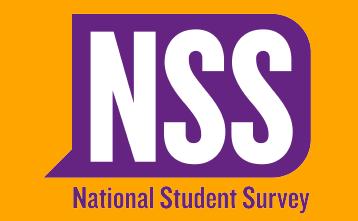Despite growing concerns over its credibility, the latest results from the NSS still offer some valuable insights.

Last week the Higher Education Funding Council for England published the results of the latest round of the National Student Survey (NSS) taken by undergraduate students across the UK at the end of their course.[1]
This year’s survey has been characterised by efforts on the part of the National Union of Students (NUS) and affiliated students’ unions to boycott the survey, because of the link between the survey and the government’s approach to university funding.[2] Results from the NSS form part of the metrics used by panels of the Teaching Excellence Framework (TEF) – the new system introduced by the government to assess teaching quality at universities.[3] Further to this, the government also announced that only universities which take part in the TEF will be allowed to increase their fees, with future increases possibly dependent on the level of TEF award.[4]
With the NUS steadfast in their opposition to the current system of student fees, the protests sought to hamper the implementation of the fees system, and to send a wider message to government and beyond.[5]
These actions have clearly been felt in this year’s results. 12 universities have had their results redacted due to low response rates (under 50% or fewer than 10), including prominent universities such as Oxford and Cambridge. Whilst other factors could be behind the suppression of the data, given that these universities took part in the survey and the publication of their results in previous years, the boycott is likely to have had an impact.
In addition to the boycott, the questions in this year’s NSS have been changed for the first time since the introduction of the survey in 2005. This means that a direct comparison between certain results is more difficult – with HEFCE advising against this. However, as some questions remain unchanged, comparisons with some of the previous year’s results are still possible.
The headline is a one percentage point decrease in overall student satisfaction of full time students studying in England. Of universities in England which had published results both this year and last, 61% have experienced a decline in overall student satisfaction since last year, with only a quarter experiencing an increase. Whilst this could be an indication of a general decline in satisfaction, it is worth remembering that satisfaction levels remain high. Whilst in many areas covered by the survey there was little change since last year’s results, for a few areas we observe some negative trends.
There was a 6 percentage point drop in the proportion of students satisfied with the organisation and running of their course, from 77% in 2015 to 71% in 2016. Similarly, the percentage of full time students in England who agree that the ‘criteria used in marking have been clear in advance’ dropped from 77% to 72%. In addition, the percentage of full time students in England agree that the arrangements for and marking of assessments have been fair dropped from 77% to 73%. These falls may be an indication of where universities could improve their performance – highlighting potential problems with management and transparency.
Interestingly, whilst average satisfaction with various different elements of teaching, support, and facilities is generally above 70%, satisfaction with unions’ representation of students’ academic interests is only 58%. This may indicate a gulf between the expectations students have of students’ unions and their performance.
Underlying all of this, questions remain about whether the NSS provides robust information about the quality of teaching in universities. The EPI report Remaking Tertiary Education, written in conjunction with Professor Alison Wolf, suggests that there is a lack of validity in the NSS as a measure of teaching quality.[6]
The debate on the quality of the NSS, its use in the TEF and its link to funding will continue. However, in the meantime it’s important that we understand what’s behind the negative trends from this year’s survey; as we can all agree that, whoever pays, the quality of university education is key.
[1] HEFCE. 2017, ‘National Student Survey’.
[2] Spink, M., 2016, ‘Education Zone Live Policy 2014-17’, NUS.
[3] HEFCE. 2016, ‘Teaching Excellence Framework Year two additional guidance’, p. 22.
[4] HEFEC. 2016, ‘Teaching Excellence Framework Year two additional guidance’, p. 7.
[5] Spink, M., 2016, ‘Education Zone Live Policy 2014-17’, NUS.
[6] Wolf, A., 2016, ‘Remaking Tertiary Education: can we create a system that is fair and fit for purpose?’, Education Policy Institute, p. 49.

